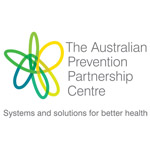
Economic analysis of prevention programs has traditionally focused on measuring the bottom line – costs and improvements in survival and quality of life – but it doesn’t often capture all the benefits of prevention programs.
Professor Stephen Jan is leading an Australian Prevention Partnership Centre project that hopes to change that.
He says that in the process of working towards their end goal, prevention programs lead to intermediate benefits that are of value in themselves.“In economic evaluation we tend to want to measure changes in health outcomes but we undervalue things like process and changes in behaviour,” says Professor Jan, Professor of Health Economics, and head of the health economics program at the George Institute for Global Health.
“These might include changes in the day-to-day routines of individuals and organisations, and the values that underpin such behaviour,” Professor Jan says. “These cultural or institutional changes are important because much of what we try to achieve in prevention is not just individual behaviour change but shifting, at a fundamental level, our tendencies to choose one action over another.”
For example, with a healthy diet program in a school, a number of steps along the way might help achieve the outcome of kids eating more healthily, such as establishing an action group in the school, setting health-related performance goals for staff members and creating mission statements or charters.
Transformational change
By leading to behaviour change at a school or among a group of children, the program not only potentially achieves its goal but transforms the way that people make decisions, and that has flow-on effects for future programs.
“This type of transformative change isn’t really factored into economic evaluation,” he says. “It tends to view intervention as something you simply switch on and switch off, which might be relevant if you’re evaluating a drug or medical procedure, but I’m not sure is an assumption that applies well in prevention.”
Professor Jan says these transformative outcomes are more than just a means to an end.
“If you can get organisations to act in a more healthy way, you are achieving something that has a public good and can be translated to other areas. As a policy maker, this is something that you want to bottle and use.”
Systems approach
Like all Prevention Centre research, the project is taking a wider systems approach, looking at issues inside and outside the health system.
One of the first tasks of this project is to examine the evidence to see not only how health economists have approached the issue but if economists outside health have developed useful tools. It will also look at how researchers from other disciplines and practitioners view measuring the wider benefits of prevention programs.
The end result will be guidelines for organisations and government to undertake economic evaluation of prevention programs.
“This tool will allow policy makers to make better decisions about the wider benefits of prevention programs,” Professor Jan says. “The bottom line is it will give decision makers a more comprehensive evidence base that is more reflective of what they themselves see as the benefits of these programs.”
By Marge Overs, Communications Manager, The Australian Prevention Partnership Centre
Find out more
- Read about the work of The Australian Prevention Partnership Centre
